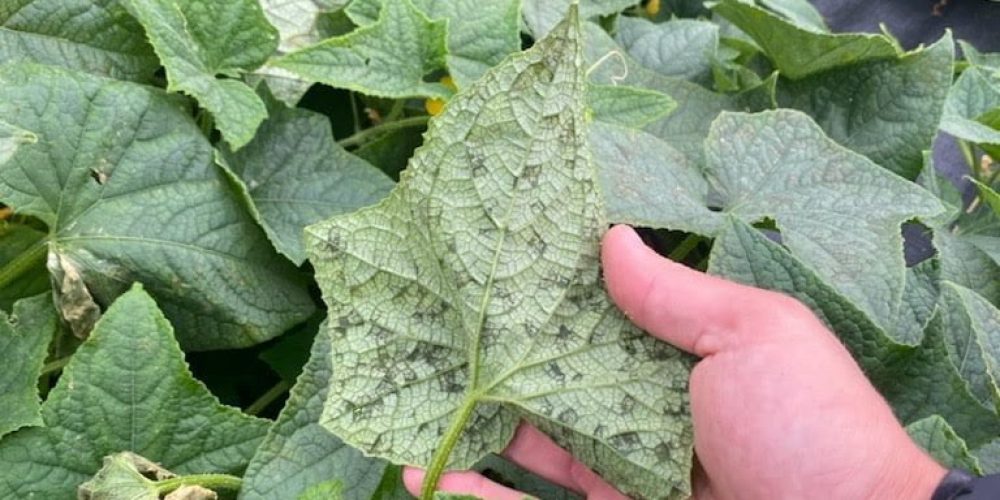Table of contents of the article
ToggleDowny mildew is a fungal disease that affects cucurbits such as zucchini, causing yellow spots on leaves and reduced growth. In this article on your site, WORLD OF PLANTS, we will discuss methods of prevention and treatment.
Symptoms of downy mildew on cucurbits
- Scientific name : Downy mildew of cucurbits
- The causative fungus : Pseudoperonospora cubensis Rosy .
Symptoms appear on the leaves only, while the fruits and other parts of the plant are not affected.
Symptoms first appear on the old leaves of the plant, as yellow ribbed spots appear on the upper surface, and purple (violet) fluffy growths appear on the lower surface when high humidity is available.
In the case of severe infection, the spots expand and connect with each other, generally leading to yellowing of the leaves, then browning and death.
The death of the leaves leads to the formation of small, deformed fruits that are susceptible to sunstroke.
The disease can lead to the death of entire plants in sensitive varieties.
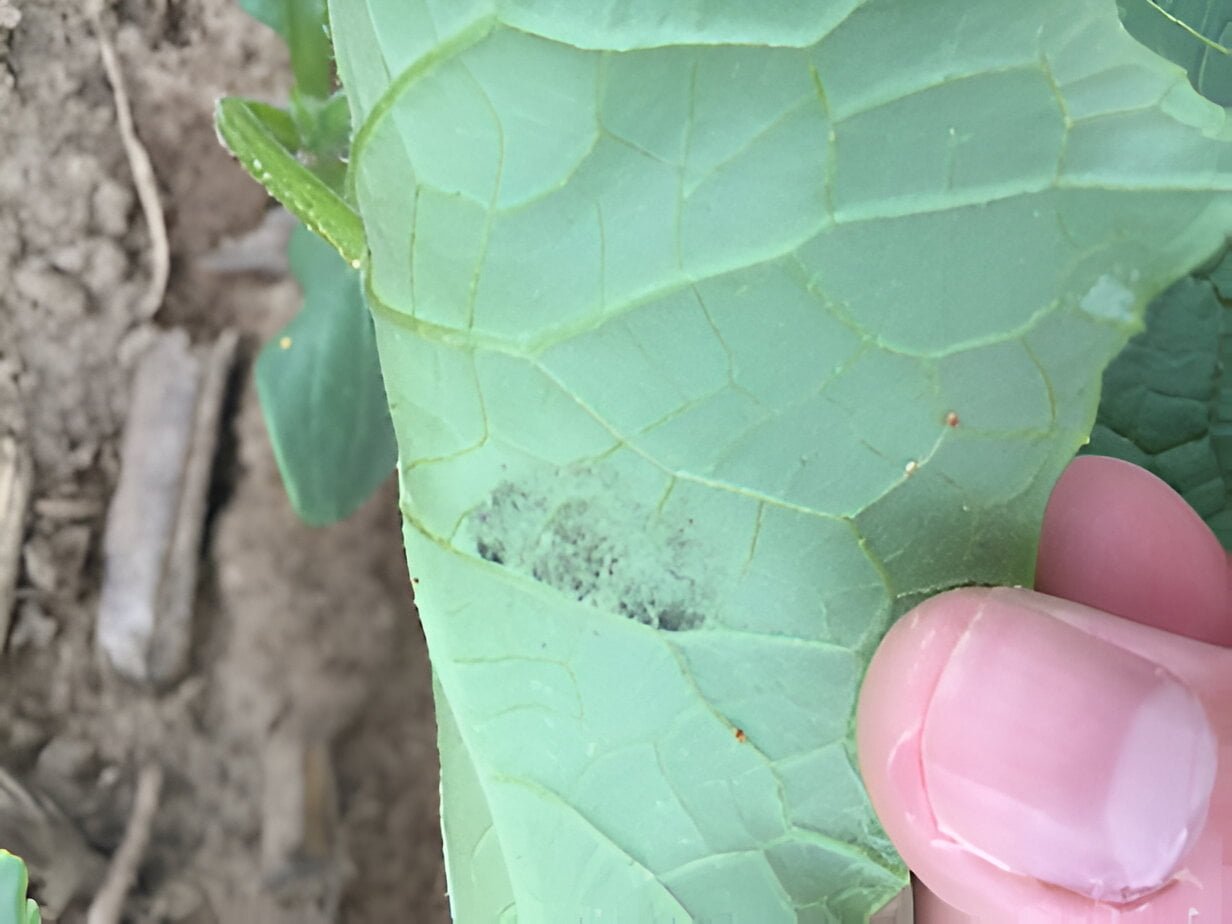
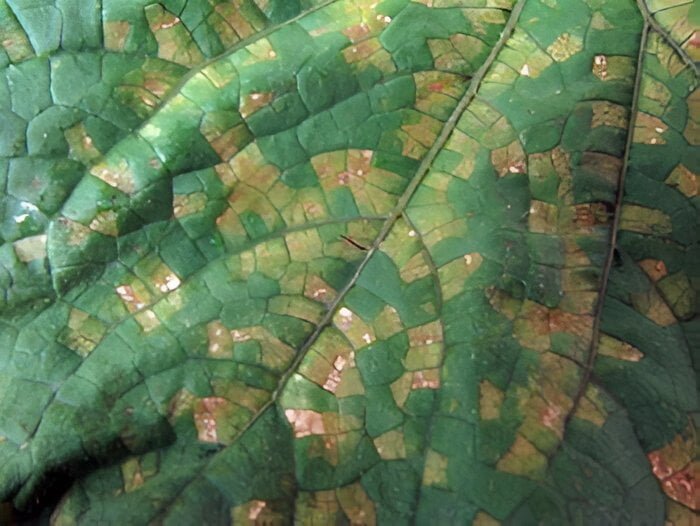
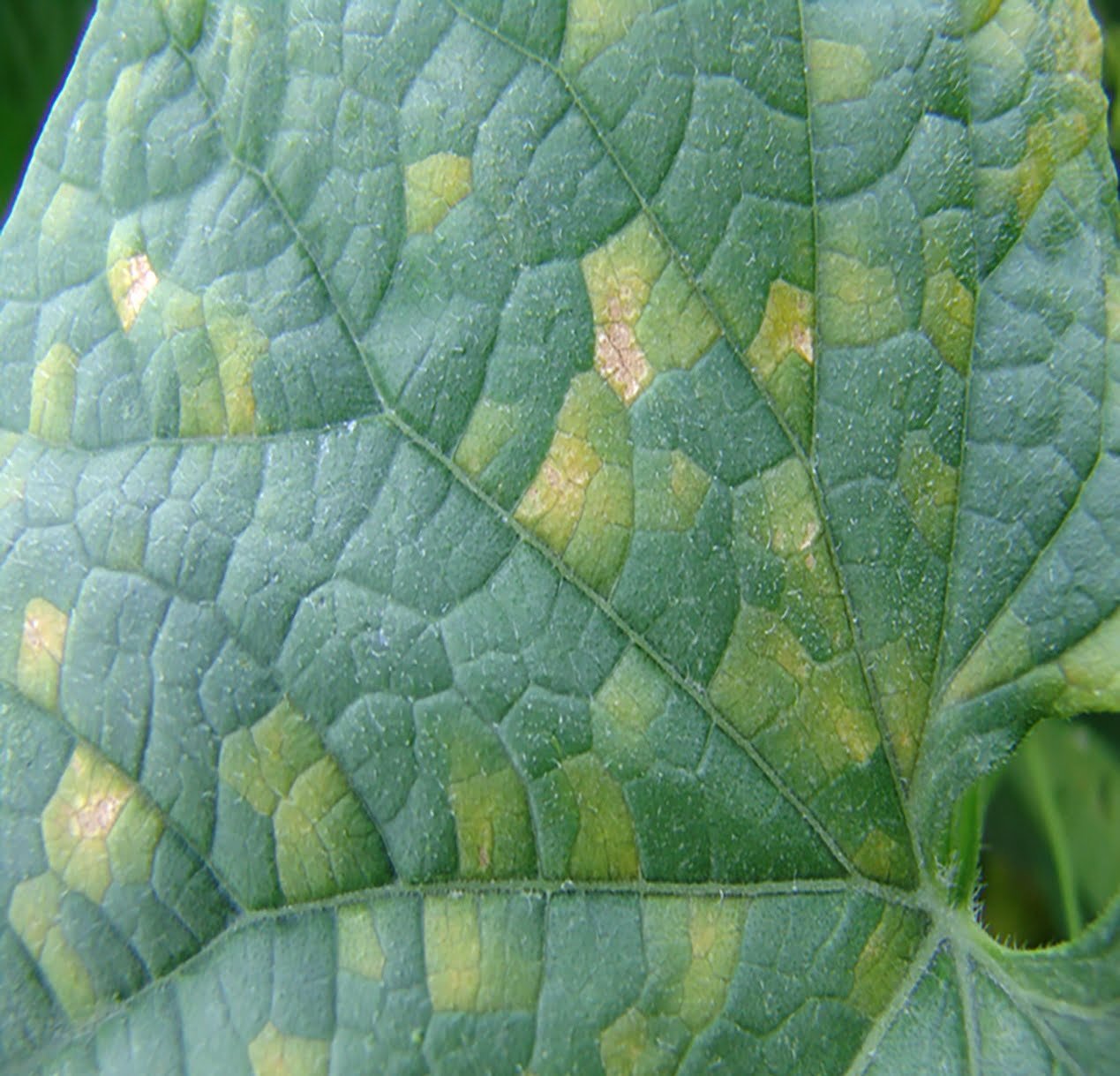
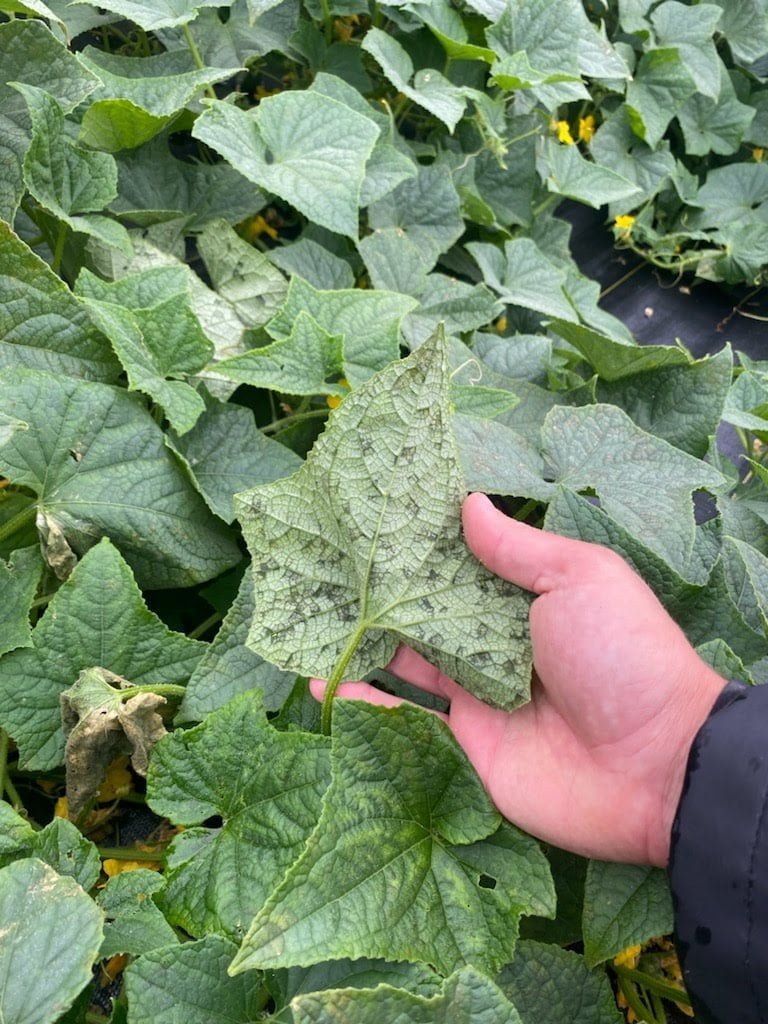
Causes of downy mildew on cucurbits
It develops in cold and humid conditions, but optimal reproduction occurs from 15°C-20°C.
Spores are transmitted by air currents. Once they land on a zucchini plant and have a long wet period, the spores germinate and release spores
Natural pores are an essential entry point for pathogens
Cultivation of sensitive varieties.
High plant density per unit area between the zucchini planting lines, and not planting zucchini at appropriate distances.
The presence of other pests around the field that leads to infection (such as fly pests, zucchini fruit worms, etc.).
Lack of attention to agricultural operations of the soil before planting, such as plowing.
Suitable conditions for the spread of downy mildew on cucurbits:
Symptoms usually appear 4-12 days after the initial infection.
Night temperatures ranging from 12°C to 23°C promote the development of the disease, especially when accompanied by heavy dew, fog, or rainfall.
Downy mildew development cycle on cucurbits
The fungus overwinters in the form of a mycelium in the tissues of infected plants. In warm areas, the fungus can overwinter on infected grass.
Symptoms usually appear 4-12 days after the initial infection.
Under appropriate conditions, conidial spores form a week after infection, and are spread by air currents and rainwater to cause secondary infections.
Losses of downy mildew on cucurbits
Significant yield loss, reduced crop quality and plant death (under favorable environmental conditions, entire fields can be destroyed within a week as a result of severe defoliation)
It attracts other pests such as borers, leafhoppers, tunnel makers, squash worms, nutworms and leafworms.
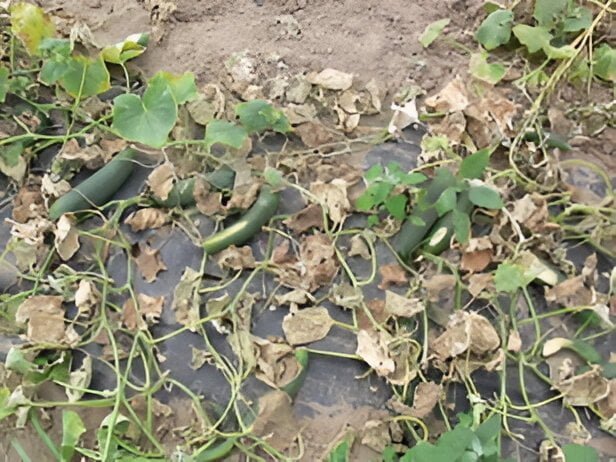
Control strategy
Preventive measures to prevent downy mildew on cucurbits
- Planting resistant varieties.
- Leave appropriate distances between plants to reduce plant density, and thus reduce humidity around the plants.
- Avoid overhead or spray irrigation.
- Maintain good weed control.
- Maintain good weed control.
Chemical and organic control recommendations
- Organic control: Other methods of reducing humidity include covering the ground with polyethylene sheets in order to reduce soil evaporation
- *Air movement: In closed structures, the drying process of plant leaves should be improved and the duration of humidification periods shortened by creating ventilated areas containing mesh curtains.
- Seed sterilization
- Chemical control: Spraying plants once symptoms of infection appear with one of the pesticides used for this purpose, and spraying is repeated every 7-10 days.
- Use of pesticides related to terazole derivatives, strobilin derivatives, and carbamate derivatives. Farmers can use the pesticide Mancozeb.
- The farmer can control the fungus by using micronized sulfur with rimidine pesticides and spraying it on the affected zucchini fruits and leaves.
In conclusion, we would like to note that we, at the world of plants website, offer you all the necessary services in the world of plants, we provide all farmers and those interested in plants with three main services::-
- Artificial intelligence consulting service to help you identify diseases that affect plants and how to deal with them.
- Blog about plants, plant diseases and care of various crops ... You are currently browsing one of her articles right now.
- An application that provides agricultural consultations to clients, as well as a service for imaging diseases and knowing their treatment for free – Click to download the Android version from Google Play Store، Click to download the IOS version from the Apple App Store.
References
- Crandall, S.G., Rahman, A., Quesada-Ocampo, L.M., Martin, F.N., Bilodeau, G.J., & Miles, T.D. (2018). Advances in diagnostics of downy mildews: lessons learned from other oomycetes and future challenges. Plant disease, 102(2), 265–275.
- OJIAMBO, P. S.; PAUL, P. A.; HOLMES, G. J. A quantitative review of fungicide efficacy for managing downy mildew in cucurbits. Phytopathology, 2010, 100.10: 1066-1076.
- Savory, E. A., Granke, L. L., QUESADA‐OCAMPO, L. M., Varbanova, M., Hausbeck, M. K., & Day, B. (2011). The cucurbit downy mildew pathogen Pseudoperonospora cubensis. Molecular plant pathology, 12(3), 217-226.
- Palti, J., & Cohen, Y. (1980). Downy mildew of cucurbits (Pseudoperonospora cubensis): the fungus and its hosts, distribution, epidemiology and control. Phytoparasitica, 8, 109-147.
- Downy mildew of Cucurbits (Pseudoperonospora Cubensis): the Fungus and its hosts, distribution, epidemiology and control – springer
- a quantitative review of fungicide efficacy for managing downy mildew in cucurbits – WILEY ONLINE LIBRARY
- The cucurbit downy mildew pathogen Pseudoperonospora cubensis – WILEY ONLINE LIBRARY
- Downy mildew in cucurbits – ontario




